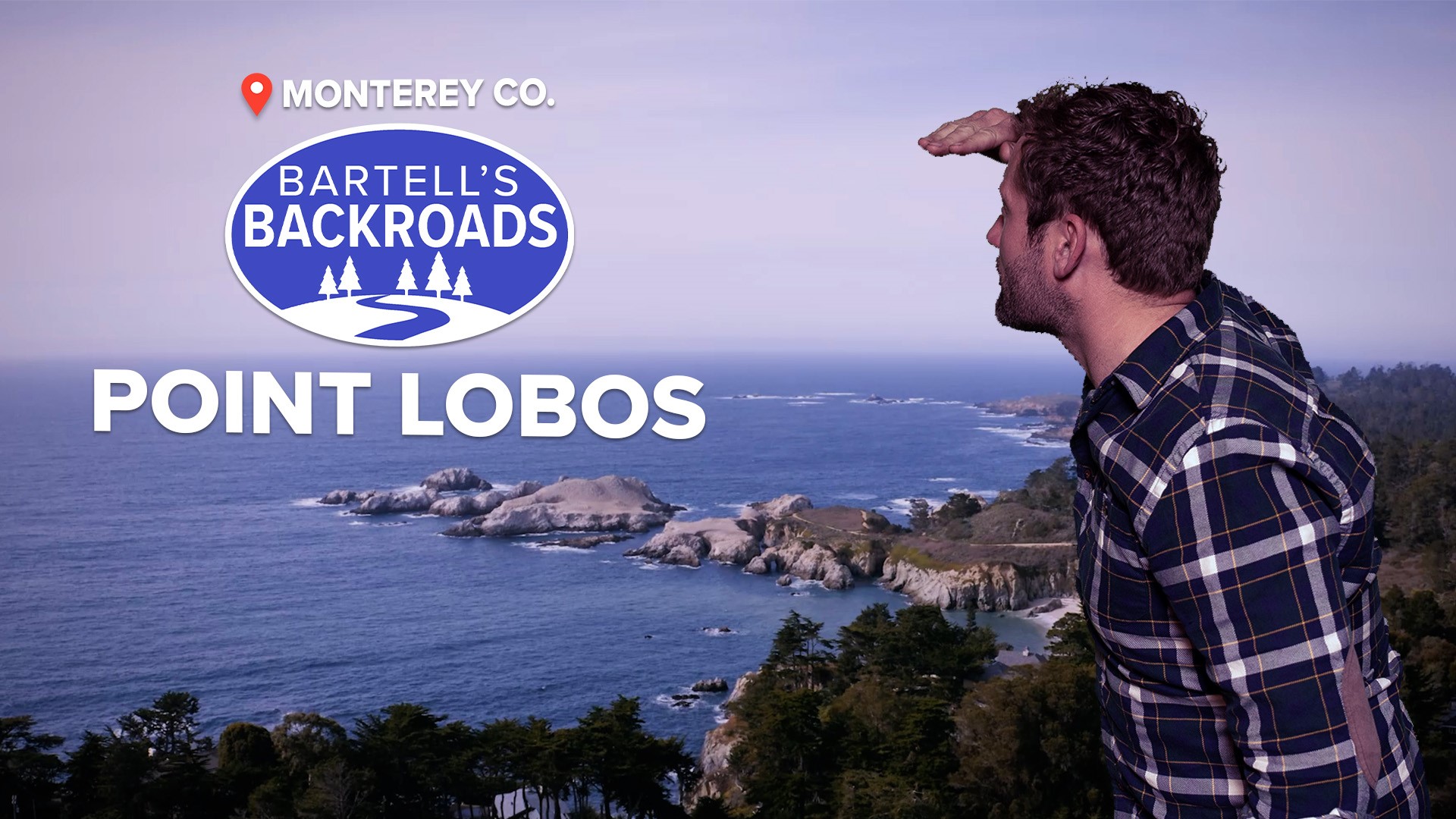CARMEL-BY-THE-SEA, Calif. — For years, world class photographers Edward Weston and Ansel Adams patrolled the rocky coves and ancient cypress forests of Point Lobos, looking for the perfect picture. Point Lobos State Natural Reserve has often been called the Crown Jewel of the California State Park System and for good reason.
Alec Knapp is a state park interpreter with the PORTS program. It’s his job to give live streaming lessons about the nature at the park.
“This place just oozes 'ahh!' Whether it's across Whalers Cove, Bird Island or Sea Lion Point, there is just so many beautiful places here and it’s hard not to be impressed,” says Knapp.
As beautiful as this place is, it also Knapp’s job to explain that Point Lobos has an ugly past.
“This was a place where they did sea otter hunting and whaling — I mean this place was an industrial park,” says Knapp.
Inside the historic whalers cabin you will learn about the atrocities humans inflicted on Point Lobos in the late 1800s. Coal mining, abalone canneries and deforestation of the rare Monterey Cypress destroyed the ecosystem, but Point Lobos was most known for its whaling industry.
TAKE A TRIP ON BARTELL'S BACKROADS:
► See an interactive map of everywhere John has visited on the backroads
► Watch all of the Backroads videos
► Follow John on Facebook
Before kerosene and electricity, lamps ran off melted animal fat. Melted whale blubber was the most popular fuel for flame drawn lamps.
“Here the Carmel Whaling Company slaughtered around 75 whales,” says Knapp.
The whale hunters at Point Lobos were often immigrants from the Azores archipelago near Portugal. They were skilled hunters who harpooned the whales in small boats.
“It was not clean; it was not one shot then they were killed. It was torture,” says Knapp.
Until early 1900s, there were about 16 whaling companies along the Monterey coast. The hunting went on for more than 40 years until cheaper petroleum-based lamp oil came along, and the whalers out of business.
"It put a huge dent into the whale population and to this day they are still recovering,” says Knapp.
By the 1920s, a new industry had come to Point Lobos.
“Hollywood definitely had its impact on Point Lobos. Over 50 movies were filmed here on Point Lobos, including the first million dollar set,” says Knapp.
That million-dollar set was built for the 1929 film Evangeline. When it was burned in the movie, it caused a wildfire.
“It burned down several trees and much of the surrounding landscape. So, it did much more damage than they planned on,” says Knapp.
Following that fire, movie production was limited at Point Lobos. The last Hollywood film permitted to film there was the 1989 Tom Hanks Classic Turner & Hooch.
In 2007, the Department of Fish and Wildlife expanded the ecological reserve and renamed the park Point Lobos State Marine Reserve. This gave greater protection to the ecosystem and made it illegal to take a wide range of fish, birds and marine animals.
“It’s nice to know that a place that was once disrupted and destroyed can return to such beauty that everyone can enjoy. I think it’s an inspiration for everyone for a better future,” says Knapp.
MORE SALTY SEA TALES FROM THE BACKROADS: Welcome to California's dolphin and whale watching capital. Dana Point is the first Whale Heritage Site in the Americas.



















